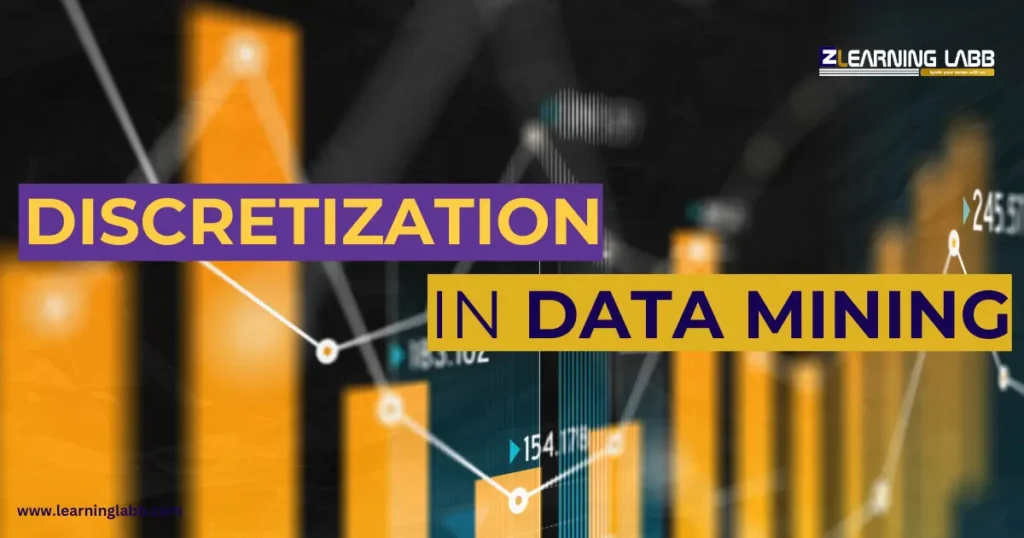Discretization In Data Mining: Ever wondered how massive datasets are simplified for analysis? Discretization in data mining is the answer! It’s a powerful technique that transforms continuous numerical data into discrete categories, making it easier to analyze and process.
Data mining algorithms often work better with discrete values rather than continuous numbers. Whether in machine learning, pattern recognition, or data analysis, data discretization in data mining helps improve accuracy and efficiency.
In this blog, we will explore:
- What is data discretization in data mining?
- Why is discretization important?
- Types of data discretization techniques in data mining
- Discretization by histogram analysis
- Real-world applications of data discretization
If you are a data science enthusiast, this guide will enhance your understanding of data preprocessing.
What is Data Discretization in Data Mining?
Data discretization in data mining is the process of converting continuous numerical data into discrete categories. Instead of dealing with infinite possible values, discretization groups data into meaningful bins or intervals.
Discretization is not just a data transformation technique; it’s a bridge between raw data and meaningful insights.

Why Is Discretization Important?
Many machine learning and statistical models work more efficiently with discrete values. Here’s why:
- Improves computational efficiency – Processing discrete values requires less computational power.
- Enhances model accuracy – Helps in reducing noise and overfitting.
- Simplifies interpretation – Discrete categories are easier to understand than continuous numbers.
- Required for categorical algorithms – Some models (e.g., Decision Trees, Naïve Bayes) require categorical data.
Types of Data Discretization Techniques in Data Mining
There are several ways to perform discretization in data mining. The choice of technique depends on the dataset, the algorithm being used, and the objective of the analysis.
1. Equal-Width Discretization
- The range of continuous values is divided into equal-sized intervals.
- Example: A dataset with values between 0 and 100 can be divided into five bins of 20 each (0-20, 21-40, etc.).
- Best for: Simple datasets with uniform distribution.
2. Equal-Frequency Discretization
- Data is divided so that each bin contains approximately the same number of values.
- Example: If we have 100 values and want 5 bins, each bin will contain 20 values.
- Best for: Skewed or non-uniform distributions.
3. Clustering-Based Discretization
- Clustering algorithms like k-means are used to form data clusters, which are then treated as discrete groups.
- Best for: Complex datasets where natural groupings exist.
4. Entropy-Based Discretization
- Uses Information Gain (IG) from decision trees to find the best split points.
- Helps in choosing optimal bin boundaries based on class labels.
- Best for: Supervised learning tasks.
5. Discretization by Histogram Analysis
- A histogram is created to analyze the distribution of data.
- The peaks and gaps in the histogram help define discrete bins.
- Best for: Understanding natural data distribution.
Discretization by histogram analysis is widely used in exploratory data analysis (EDA) to identify meaningful patterns in data.

How Does Discretization in Data Mining Work?
Let’s break down the process of discretization with a simple example.
Example scenario:
Imagine we have a dataset of students’ scores in a test:
Scores: [55, 60, 68, 75, 85, 90, 95, 98]
We want to categorize these into three discrete levels:
- Low (0-60)
- Medium (61-85)
- High (86-100)
After applying discretization, our dataset transforms into:
Scores (Before): [55, 60, 68, 75, 85, 90, 95, 98]
Scores (After): [Low, Low, Medium, Medium, Medium, High, High, High]
By converting continuous values into meaningful categories, machine learning models can now analyze trends more effectively.
Applications of Discretization in Data Mining
Where is discretization in data mining used? Practically everywhere!
1. Machine Learning & Predictive Modelling
- Decision trees and Naïve Bayes classifiers require categorical data.
- Example: Converting temperature values into categories like “Cold”, “Warm”, and “Hot” for weather prediction.
2. Medical Data Analysis
- Patient data such as blood pressure, glucose levels, and cholesterol are often discretized for diagnosis.
- Example: Blood sugar levels categorized as “Normal”, “Pre-Diabetic”, and “Diabetic”.
3. Customer Segmentation in Marketing
- Discretization helps in creating customer groups based on spending patterns.
- Example: Categorizing customers into “Low Spenders”, “Moderate Spenders”, and “High Spenders”.
4. Fraud Detection in Finance
- Anomalous transaction values can be detected by discretizing transaction amounts.
- Example: Identifying suspicious transactions based on predefined categories.
Discretization in Data Mining: Best Practices
- Choose the right discretization technique – Equal-width for simple data, entropy-based for supervised learning.
- Avoid excessive discretization – Too many categories can cause loss of information.
- Validate with domain experts – Ensure categories are meaningful for the application.
- Use visualization – Histograms and box plots help in understanding data distribution.
Data preprocessing is 80% of data science work. Without proper discretization, even the best algorithms may fail.

Learn Data Science & Discretization Techniques with Ze Learning Labb
Want to master data mining, machine learning, and data analysis? Ze Learning Labb offers industry-focused courses to help you become a data science expert. These courses cover data discretization techniques in data mining, machine learning algorithms, and practical case studies.
Ready to take your data science career to the next level? Join Ze Learning Labb today!
On A Final Note…
Discretization in data mining is an essential technique that simplifies continuous data, making it more manageable for machine learning models. By choosing the right discretization method, data scientists can improve model efficiency, accuracy, and interpretability.
If you’re looking to build expertise in data mining and analytics, consider enrolling in a data science course at Ze Learning Labb!





